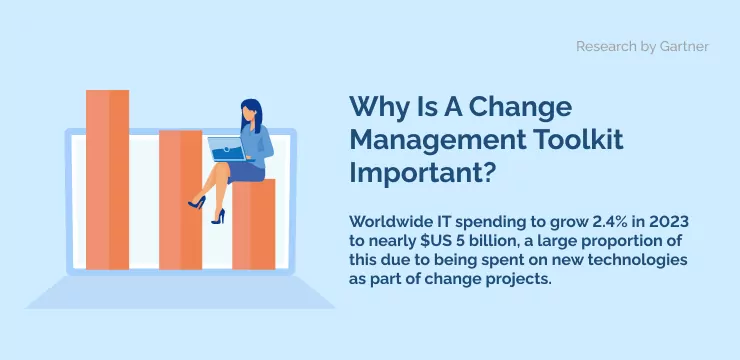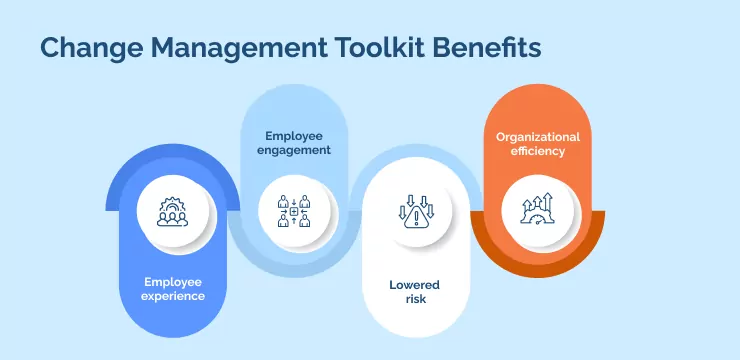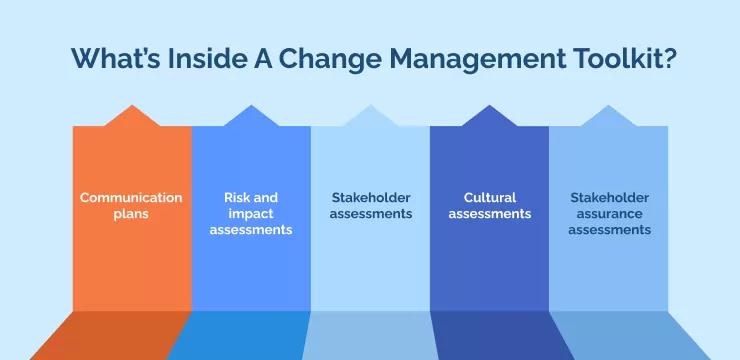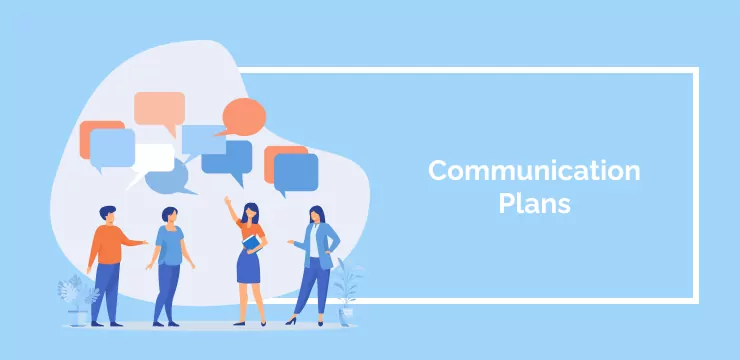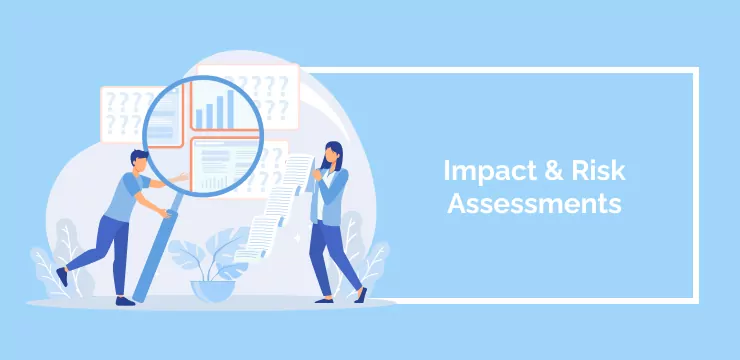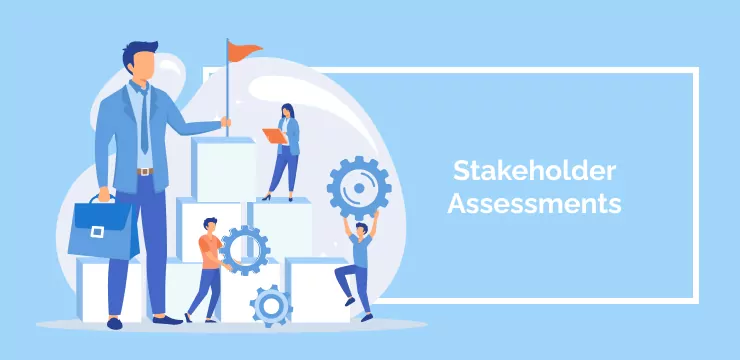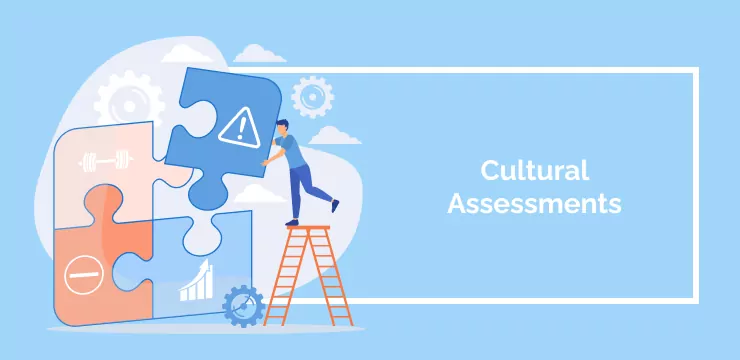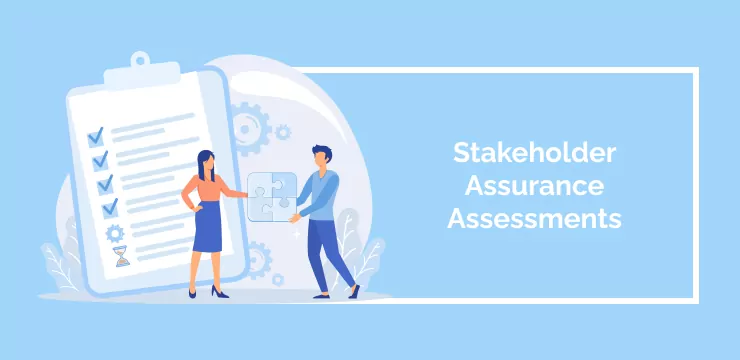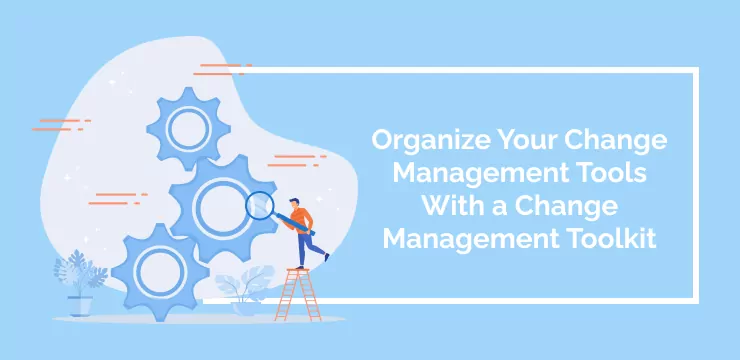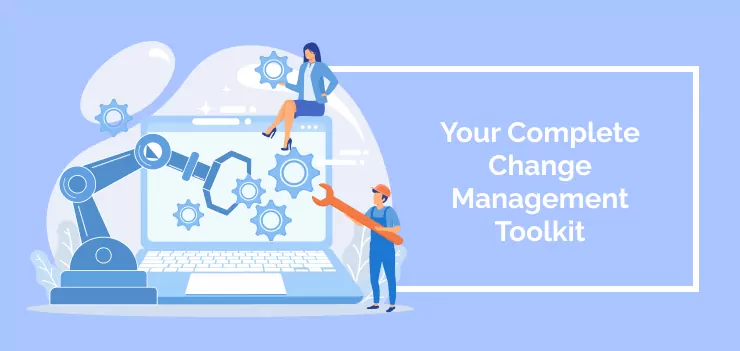
Organizational Change is easy, right?
It can be with the guidance and structure of a change management toolkit. Managing change is a complex process, requiring careful planning, data-driven decisions, balancing the needs of stakeholder groups, and an understanding of your company culture.
A change management toolkit caters to all these needs to ensure your change project is successful.
As part of your change management toolkit, we will show you the following tools:
- What is change management?
- What is a change management toolkit?
- Why Is A Change Management Toolkit Important?
- Change Management Toolkit Benefits
- What’s Inside A Change Management Toolkit?
- What Is The Next Big Change Management Trend in 2023?
What Is Change Management?
The first question we need to ask is, what is change management?
To answer this question, we must consider the impact of change on employees. Changes brought on by digital transformations lead to stress in high numbers of staff due to the frustration of learning new digital tools, the fear of change, and the thought of workforce reductions leading to job loss.
Change management manages these pressures by working with staff to understand their needs and reassuring them that change is positive for them.
What Is A Change Management Toolkit?
A change management toolkit gives the change team of an organization the tools to see if they need change and, if so, develop a justification for adopting new changes. Data gained from using a change management toolkit can drive every process in a digital transformation as it can inform which change management framework is best, impacting the employee experience of change.
Why Is A Change Management Toolkit Important?
Gartner forecasts Worldwide IT spending to grow 2.4% in 2023 to nearly $US 5 billion, a large proportion of this due to being spent on new technologies as part of change projects. However, change management is challenging because humans do not like change, so a toolkit for dealing with this is essential in the business world.
Why is Change Management a Huge Challenge?
Changes represent the unknown, and our human brains do not adapt well to change, let alone the vast digital disruption the tech industry has experienced over the past decade. A change management toolkit equips the change leadership to support staff in dealing with change successfully.
Change Management Toolkit Benefits
There are several benefits to using a change management toolkit, beginning with the significant improvement in employee experience.
- Employee experience: The toolkit supports employees through change, improving their experience.
- Employee engagement: The toolkit helps project managers understand the experience of change for employees, supporting them to engage better with their role while learning new digital tools.
- Lowered risk: The toolkit helps staff build change strategies incorporating risk management.
- Organizational efficiency: Change management toolkits streamline change projects, increasing organizational efficiency through improved operations and business processes.
Now that we have looked at the benefits of the change management toolkit let’s examine what’s inside one of these toolkits.
What’s Inside A Change Management Toolkit?
It’s helpful to know what’s inside a change management toolkit before you get started so you know what to expect and can prepare for the change management process. The tools inside the toolkit are as follows:
- Communication plans.
- Risk and impact assessments.
- Stakeholder assessments.
- Cultural assessments.
- Stakeholder assurance assessments.
If you are unfamiliar with any or all of these terms, don’t worry. We cover each in detail below, beginning with communication plans.
Communication Plans
After identifying and profiling your stakeholders, project leaders can develop a Communication Plan to outline the engagement strategies. The plan can include daily reports for one set of individuals, monthly webinars for another group, or quarterly milestone updates with financials for an additional party – all tailored to each stakeholder’s needs. By crafting such individualized plans, you will surely maximize your outreach efforts!
A Communication Plan is a powerful tool when combined with the right Stakeholder Engagement Strategy, as it outlines the target groups to communicate with, key messages to relay, communication timing, channels utilized, and expected results.
Even though project managers usually create it towards the beginning of a transformation process, it is best to reference this plan frequently during the program. We suggest monitoring communication at every stage or major milestone to determine your communications and channels’ efficiency. Doing so will help you quickly figure out what was successful so that you can customize your communication strategy for future steps.
Impact & Risk Assessments
Companies can be a labyrinth to navigate with their many facets, culture, hierarchy, and goals. Potential obstructions may emerge without adequately identifying how changing one part of an organization affects others. Any transformation must take into account all players involved to ensure success.
It’s easy to overlook the implications of a change until after it affects individuals, which can lead to significant delays and even jeopardize your project. A Change Impact Assessment provides insight into these unforeseen risks of how change impacts an organization before it becomes too challenging to manage.
Stakeholder Assessments
From the initial stages of any change process to its execution and beyond, utilizing the Stakeholder Assessment tool is essential for successful stakeholder management. This groundbreaking tool will ensure that change leaders plan communications effectively every step of the way.
Change Managers create an organized overview of stakeholders affected by changes through interviews and data collection. This overview includes characteristics like stakeholder interest, influence, and change impact, which change leaders can use to effectively plan relevant communications for each audience segment.
Project leaders can also create a stakeholder map to clarify who needs more focused management attention.
Cultural Assessments
Cultural assessments can help uncover the inner workings of employee perception, providing insight into your organization’s success and pinpointing where there is room for improvement. By unearthing an understanding of organizational culture through this assessment process, leaders can serve their employees better while striving towards a more successful business model.
Conduct a Cultural Assessment to ensure that all stakeholders have a unified understanding of company culture. This assessment will uncover discrepancies in perceptions and investigate roles, working styles, and employee behaviors that can influence organizational results. A well-executed evaluation is vital to fostering an environment of mutual understanding among team members.
If you neglect to consider the environment in which your stakeholders work, you may not have enough knowledge to boost adoption successfully. Developing strategies for addressing pain points and counteracting resistance may be difficult if you don’t understand the culture well enough.
Stakeholder Assurance Assessments
After introducing changes, it is essential to establish a means of collecting and consolidating feedback to identify discrepancies and manage acceptance. A Stakeholder Assurance Assessment is a practical approach for questioning and obtaining input from diverse stakeholders.
To accurately assess your progress, be sure to track these essential metrics:
- By introducing new changes, we have managed to maintain or even enhance user adoption.
- After the change stabilized and became part of our new normal, we saw an impressive decline in potential issues that would have otherwise resulted from additional changes.
- Depending on the project, the advantageous outcomes of change will be evident.
- A Change Dashboard allows you to illustrate the above metrics and pinpoint key pain points for your senior sponsors, providing them with an opportunity to take appropriate action.
Knowing what a change management toolkit contains will help you utilize each tool effectively and work toward success.
Organize Your Change Management Tools With a Change Management Toolkit
Change tools are essential to support your staff through managing change as they keep up with today’s rapidly shifting business environment. By utilizing a complete change management toolkit, you can help ensure that your organization is prepared to adapt quickly and efficiently to changing conditions and take advantage of opportunities that come its way.
With the right set of tools, you can ensure that you are always ready for anything the future may bring. You no longer need to face change alone – instead, organize your efforts into a robust change management toolkit that will equip you and your organization for success. So, don’t wait – start organizing your complete change management toolkit today!
WalkMe Team
WalkMe spearheaded the Digital Adoption Platform (DAP) for associations to use the maximum capacity of their advanced resources. Utilizing man-made consciousness, AI, and context-oriented direction, WalkMe adds a powerful UI layer to raise the computerized proficiency, everything being equal.

